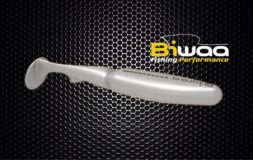5 Tips for fishing small streams
Written by Colton Orbaker
Small streams are becoming increasingly popular among avid anglers that wish to avoid the shoulder-to-shoulder combat fishing associated with territorial “hole” claims on larger famed streams. Small streams provide the angler with diverse stretches of water with little pressure or competition. Approaching and finding success fishing these small streams varies, but there are five principles that will assist any angler in their attempts to tame the “wild” of small streams:
1. THINK “OPPOSITES” – When fishing unpressured small streams, varying your fly selection may help “bust a slump”, and catch a few more fish! Trout in smaller streams are often more opportunistic when presented with unusual forage sources. This may mean oversizing your presentations with large stimulators or terrestrials as well as large subsurface imitations. When trout see little forage food due to stream infertility, they are more likely to pounce when given the opportunity.
The opposite holds true in regards to very fertile small streams. When trout see food sources frequently, they become very selective and accustomed to the volume of food rushing towards them. If you notice trout refusing your presentations after noticing and approaching them, you may wish to switch to a smaller imitation of the same fly. Smaller flies are less intimidating to skittish fish, and will often “seal-the-deal” on a tricky stretch of water.
2. DRESS DOWN DAYS– Although it is an old wives tale that suggests dull or drab clothing spook less fish, but it may be less superstition than thought prior. Dressing in muted olives, tans, or even camouflage is a lesson we may learn from competitive anglers whose sole purpose is to hook as many fish as possible within a short time frame. One commonality seen among most successful competition anglers is the garb worn. Whether it is the technical ability demonstrated by each angler, coinciding with the gear and clothing utilized, or whether it uniquely one over the other, it never hurts to stack the odds in the angler’s favor.
3. THINK SMALL, BE SMALL – When approaching a small stream, an angler must understand how trout see. Trout evolved to physiologically scan upward. The majority of a trout’s natural predators are avian, and therefore, attack from above. This means, in order to tip the hat in the angler’s favor, he or she should stalk their quarry with a low profile. By approaching the banks in a compact manner will lessen the chance of falling within the small window of vision shallow trout will have in small streams. This means, a greater chance to go unnoticed.
4. ”EXTRA” TERRESTRIALS – It is well known that terrestrials play a large role as the forage food sources for both still water, and small streams. In addition to traditional methods of fishing grasshopper imitations (both with and without droppers), utilizing a “twist” on traditional nymph selection may serve anglers well when caught in a dry spell mid summer. Tying large hopper patterns to be fished both like emerging and nymph patterns covering multiple water columns make great meaty treats during intense grasshopper activity above the water column. In small streams, where stream infertility is often an issue, food sources will frequently come from primarily terrestrial insects. It is not uncommon for hoppers and large flies to drown in turbulent water. This makes large crippled insects especially vulnerable subsurface. Utilized at the right time, and on the right stretch of water, multi-hopper rigs find great success with eager trout.
5. LOOKING FOR LOVE IN ALL THE WRONG PLACES – Lastly, it is important to all trout anglers to remember that trout are not evenly distributed within a trout stream. This means that within any given mile of stream, there will be areas and stretches of water that are more prone to hold fish. In addition, areas and runs that typically hold big trout, will continuously hold big fish. This is consistent as long as the dynamic of the stream does not physically change. It is key to understand how to read a stream, and identify areas where fish hold. The benefit to small trout streams, is that physical contour is often visible in times of low water or drought. This means it is easier for anglers to “do their homework” and learn their water. Learning a stream is one of the most efficient ways to better understand how to fish any given water.
Utilizing these tips as well as basic trout angling techniques may better your chances of hooking into more small stream trout. Growing up on small streams, I thoroughly appreciate the escape exploring these streams provides me. It is a wonderful way to return to the grassroots of fly fishing, hone new skills, and to test the technical skills of any seasoned angler.











